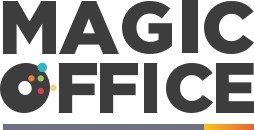
Understanding Operational Risks in the Arabian Emirates
Exploring the Landscape of Operational Risks in the Arabian Emirates
Operational risks present significant challenges for businesses operating in the dynamic environment of the Arabian Emirates. These risks encompass a wide range of potential threats that can disrupt business operations, impact financial stability, and hinder compliance efforts. Understanding these risks is crucial for formulating an effective operational risk management framework.
Key to managing these risks is a thorough risk assessment process, which involves identifying potential risks stemming from internal processes and external events. This assessment helps determine the organization’s risk appetite and informs the decision-making needed to mitigate risks effectively.
Operational risks in this region may include a variety of factors, such as technological disruptions, market volatility, geopolitical influences, and compliance challenges. Addressing them requires a tailored approach, considering local business practices and regulations. By leveraging a comprehensive understanding of these risks, organizations can enhance their operational resilience and maintain business continuity.
An effective management framework should also include processes for risk identification, impact assessment, and risk control. Continuous risk reporting and management operational strategies play vital roles in keeping the organization well-informed and prepared for any potential disruptions.
Ultimately, understanding the unique operational risks in the Arabian Emirates is the first step towards developing a robust ORM framework that can withstand the complexities of this diverse business landscape.
Key Components of an Operational Risk Management Framework
Essential Building Blocks for Effective Business Resilience
A robust Operational Risk Management (ORM) framework is essential for organizations in the Arabian Emirates to effectively manage potential risks and ensure business continuity. Understanding the key components of such a framework helps in risk identification and developing a proficient strategy to handle them.
One of the foundational elements of an ORM framework is a comprehensive risk assessment. This involves evaluating the potential impact of various risks on business operations. By conducting risk assessments, organizations can prioritize threats and allocate resources for risk control effectively.
Equally important is establishing clear risk appetite and tolerance levels. Organizations must define the extent of risk they are willing to accept in pursuit of their objectives. This aids in aligning the risk management process with the business's strategic goals.
Integrating an effective reporting and compliance process is crucial. Proper reporting mechanisms and compliance with regulatory standards ensure that identified operational risks are communicated promptly and managed efficiently. This also supports transparency and accountability across the organization.
An effective ORM framework relies heavily on a well-structured risk mitigation strategy. This involves deploying both preventive measures and contingency plans to manage potential operational risks. Analyzing internal processes and potential external events helps in formulating these strategies.
Moreover, ensuring operational resilience within the organization requires consistent adherence to best practices. Documented processes and operational guidelines tailored to specific business characteristics enhance control and reduce errors.
Streamlining key operations also enhances risk management effectiveness. For example, refining the purchase request process can improve operational efficiency and resilience. For valuable insights on enhancing this process, visit streamlining the purchase request process.
Ultimately, an organization that dedicates efforts to establishing and maintaining a sound ORM framework stands to better navigate the complex landscape of operational risks and achieve its business objectives confidently.
Tailoring Risk Management to Local Business Practices
Adapting Risk Strategies to Align with Local Norms
The Arabian Emirates present a distinct business landscape, characterized by unique cultural, economic, and regulatory factors. To build an effective operational risk management framework, organizations must tailor their risk management strategies to align with these local norms. This requires a deep understanding of the environment in which they operate, alongside an appreciation for regional variations that could influence risk exposure and resilience.
Business practices in the Arabian Emirates prioritize relationships and trust. Incorporating these values into the operational risk strategies can significantly enhance the effectiveness of risk assessment processes. Engaging with local stakeholders ensures that the identified risks are relevant and mitigating actions are culturally appropriate, thereby fostering a proactive risk management culture.
Furthermore, considering the potential risks stemming from internal processes and external events specific to the region can lead to informed decision-making and better risk control. This localized approach helps in refining the organization’s ORM framework, especially in terms of compliance and reporting adjustments needed to meet regional regulations.
For a practical application of tailoring risk management, organizations can benefit from enhancing operational processes like outsourcing MRO procurement, which may involve setting risk parameters that consider market conditions and local supply chain disruptions, thereby ensuring operational resilience.
Leveraging Technology for Risk Management
Embracing Smart Solutions for Enhanced Risk Handling
In the ever-evolving landscape of business operations, organizations in the Arabian Emirates must embrace modern tools and technologies to enhance their operational risk management capabilities. By leveraging data-driven technologies, companies can streamline their risk assessment and management processes, enabling more effective decision-making and risk mitigation strategies. One way technology aids in risk management is through the use of advanced data analytics. These tools enable organizations to perform comprehensive risk identification and assessment, providing insights into potential risks and their impact on both internal processes and external events. The ability to analyze large volumes of data quickly and accurately allows businesses to anticipate issues before they arise and devise appropriate risk control measures. Additionally, technology platforms offer improved compliance and reporting features. These features guide organizations in aligning their operations with regulatory requirements, ensuring a robust compliance framework. Effective reporting systems offer timely and accurate updates on operational risks, helping businesses adhere to their risk appetite while fostering operational resilience. Incorporating digital tools into the operational risk management framework doesn't just improve efficiency; it also empowers organizations to foster a culture of risk awareness. By consistently monitoring risk levels and refining risk mitigation tactics, businesses ensure long-term stability and continuity. Deploying advanced technology in risk assessments enables organizations to pinpoint areas of vulnerability, fortify their financial structures, and safeguard business continuity. When employed judiciously, these smart solutions not only bolster operational resilience but also pave the way for continuous improvement in the organization's overall risk management framework.Building a Risk-Aware Organizational Culture
Fostering a Company-Wide Awareness of Risk
In the rapidly evolving business landscape of the Arabian Emirates, building an awareness of operational risks throughout the organization is critical. Every member of the organization should be informed and engaged in risk management processes. This requires clear communication about the potential risks and the impact they may have on operations, financial stability, and business continuity.
Promoting Effective Communication
Transparent reporting and open dialogue within the organization are essential to fostering a risk-aware culture. Employees should be encouraged to actively participate in discussions about risk identification and assessment. This involvement not only enhances their understanding of operational risks but also empowers them in the decision-making process. By creating an environment where potential risks are openly discussed, organizations can mitigate risks before they escalate.
Implementing Continuous Learning Programs
Continuous education and training can significantly impact the effectiveness of a risk management framework. Organizations should regularly update their teams on the latest best practices in risk management, compliance, and operational resilience. This learning process should be tailored to reflect local business practices and external events that may potentially affect operations.
Incorporating Risk Management into Daily Operations
Integrating risk management into daily business processes ensures that it becomes part of the organizational culture. Employees at all levels should be aware of the organization's risk appetite and how it relates to internal processes and external circumstances. By making risk assessment a routine part of their workflow, staff can proactively identify and control risks impacting the organization.
Establishing a Supportive Leadership Structure
Leadership plays a pivotal role in nurturing a culture of risk awareness. Management must demonstrate commitment to operational risk management by modeling best practices and promoting a supportive atmosphere for risk control and mitigation. Leaders should provide the necessary tools and resources for effective risk assessment and empower employees to take ownership of their role in risk management.
Continuous Improvement and Monitoring
Continual Enhancement: The Lifeline of Risk Management
In the ever-evolving business landscape of the Arabian Emirates, maintaining an effective operational risk management framework is a perpetual process. Adopting a dynamic approach to continuously improve and monitor operations is not only a strategy for resilience but a necessity for sustaining a competitive edge.
Organizations must commit to regular risk assessments and continuous monitoring to stay ahead of potential risks. This ongoing process involves not just identifying risks but also evaluating their potential impact on the organization’s operations. A focus on improving internal processes ensures that the organization remains agile in its response to both foreseeable and unforeseen challenges.
- Integration of Data and Technology: Leverage data and advanced technologies to enhance the efficacy of risk identification and management. Digital tools allow for real-time tracking and comprehensive reporting, aiding in swift decision-making and proactive risk mitigation.
- Feedback Loops: Establishing feedback mechanisms allows organizations to learn from past experiences. By analyzing external events and internal operations, businesses can refine their risk management strategies, aligning them more closely with organizational objectives and risk appetite.
- Regular Training: Continuous training sessions are key to building a risk-aware culture. Educating team members on best practices and reporting mechanisms keeps everyone aligned and proactive in managing operational risks.
- Compliance and Regulation: Ongoing compliance checks and audits not only ensure adherence to local laws but also identify areas for improvement within the management framework.
A commitment to operational resilience, through ongoing improvement and monitoring, enables organizations to respond swiftly and decisively to changes in the business environment, securing their long-term growth and stability.













